· 10 min read
How Criminal Case drives growth
Michail Katkoff
Product Manager at Supercell
Criminal Case by Pretty Simple Games is one of the best Facebook games in terms of growth. What makes it even more impressive is the fact that Pretty Simple doesn’t have any hit titles to drive the traffic from. Not to mention the incredibly tough competition within the category of hidden games.
The amazing growth of Criminal Case is due to several factors, but in this post I’m going to concentrate mainly on the game mechanics. Thus, I won’t be saying anything about the great graphics, smooth gameplay and intriguing level design of Criminal Case. Instead, I’ll deconstruct the core loop and take you through the great retention, virality and monetization mechanics of the game.
In the end I’ll also try to answer whether Criminal Case has the potential to see the same growth on mobile that it saw on Facebook.
The Core Loop
Criminal Case has the typical core loop of most energy-based game economies. The goal of each session is to earn Stars, which are used to progress in the game. A Star is earned by completing a set of hidden object games. Each hidden object game (HOG) consumes Energy. In other words, Energy is always converted into Stars. The skill element comes from speed – the faster player completes HOG, the less Energy they’ll end up consuming and thus earning Stars.
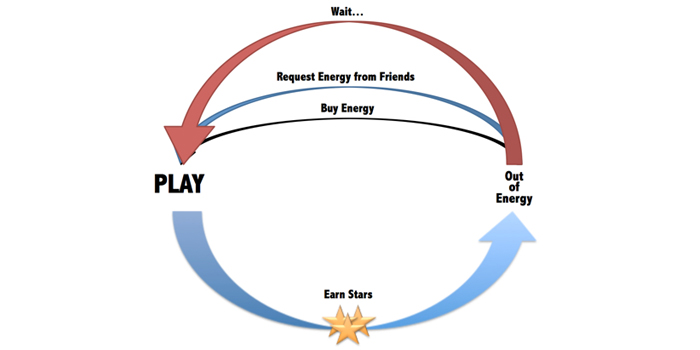
Progress follows every session, as players can’t fail a level due to hint mechanics. The ensured progressions with every amount of Energy spent is also something typical for Energy based games. Inability to fail can be also seen as guaranteed progressions, which leaves player feeling accomplished after each session.
Retention
From a game mechanics perspective, the retention of Criminal Case is driven by Energy and timer mechanics, which are both boosted by the virality mechanics Facebook provides. From the players’ perspective, the motivation to return to the game is driven by competition and the need to solve an ongoing case.
Energy
Solving a case means having several play sessions of hidden object games. Each session is 5,5 HOGs (hidden object games) due to the smart design of the Energy meter: maximum Energy is 110 points and each HOG consumes 20 points. So, by the end of a session, the player needs ‘only’ 10 more points that they can ‘easily’ request from friends.
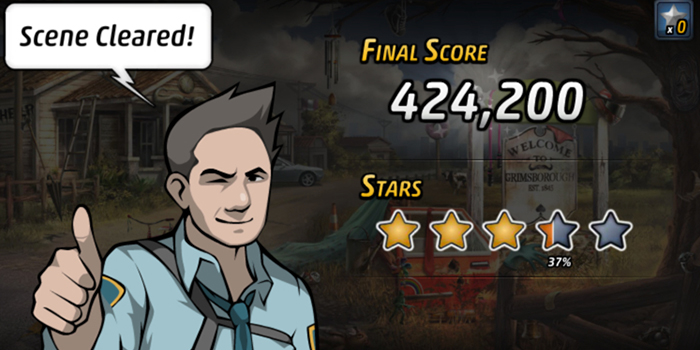
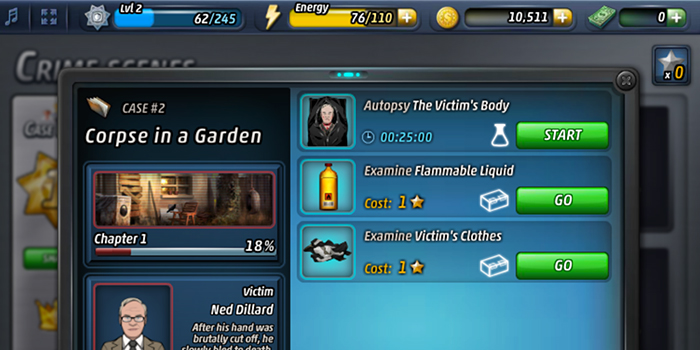
Time Mechanics
Player progression is slowed down regularly by timer mechanics, which are designed in the form of forensic investigations. These timers are usually activated when the player reaches a breakthrough point in the game, halting the progression and encouraging player to pay in order to speed up the investigation.

Story
The developers behind Criminal Case are without a doubt big fans of the CSI-series. Every case is like an episode, driven by a easy-to-follow dialog, plot twists, forensic investigations and dozens of crime scene investigations.
The player’s need to complete is beautifully fueled by a progress meter, which gets filled up every time that the player earns and consumes stars.
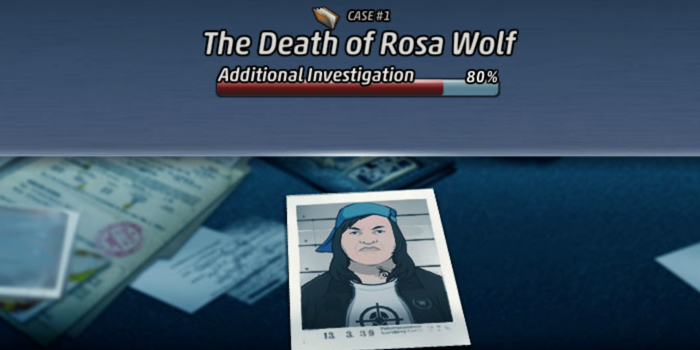
Competition
A key element of social games is to allow players to play with each other – or at least create the illusion that they are playing with their friends. The social element is vital as it allows players to collaborate with each other and leads to competition, as players start comparing their progress. Criminal Case uses two powerful tools to create competition between players: persistent progress maps and leaderboards.
The persistent map, which shows how far each player has gotten throughout the game, encourages players to continue playing in order to catch their friends. What’s best about the map progress view is the fact that even though the player hasn’t been playing the game for months, they are still visible to their playing friends and thus act as targets. “If my friend is at level 10, I’m surely going to pass her”.
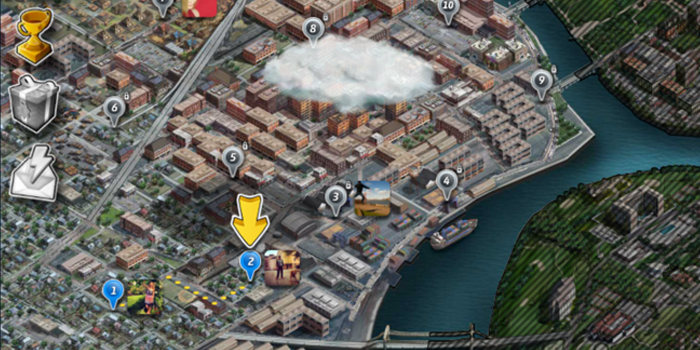
While the persistent map offers long-term goals, the level based leaderboards are perfect to boost competition for every session and every HOG.
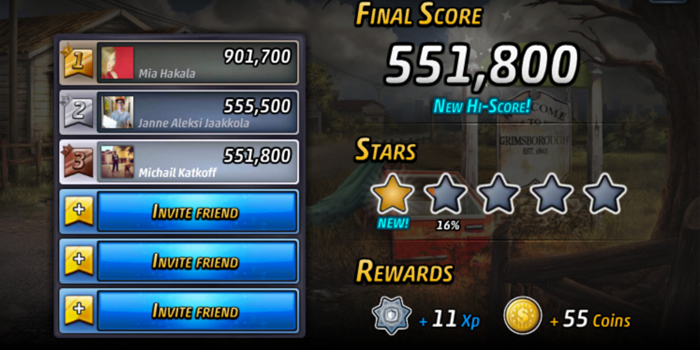
Replayability
Level design is a huge bottleneck in hidden object games. To counter this problem, Criminal Case has players playing the same levels over and over again with a cleaver Star system.
Stars enable players to progress in the game. The only way to earn a Star though is to play one specific level till enough points have been reached. Player earns more points by completing levels faster. Because speed is rewarded, familiar levels become more productive, which encourages players to play the same levels over and over again.
Virality
Criminal Case has some of the nicest integrated social features on the platform. In fact I believe that together with the great retention mechanics, they are the reason for topping the competition. What makes the social elements of Criminal Case so powerful is the natural way they’re integrated into the game. On a platform troubled with over-aggressive virality, Criminal Case is a benchmark for how to do it right.
Collaboration
Before each HOG start, player has the opportunity to choose a friend as an investigation partner for the round. The reason to choose a friend is that they give players up to 4 hints. What makes this feature great is that players who play more actively become more valuable as they have more ‘Hints’ they can give.
From the player’s perspective, being active makes sense as they are chosen more often as partners and thus have the opportunity to receive thank you gifts (cards that can be converted into an Energy pack). Each Partner can be only chosen once per day, which drives players to play daily.
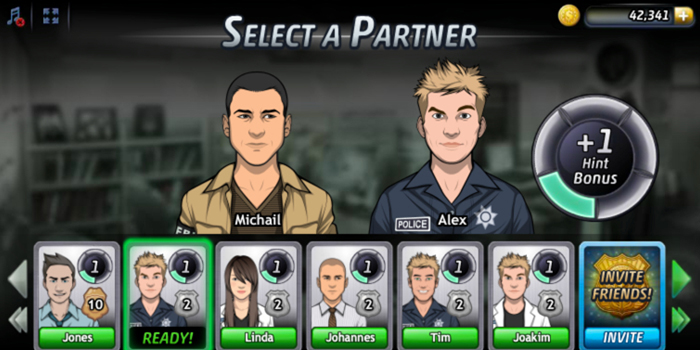
Requesting
While Criminal Case sports some of the nicest virality features on Facebook, it also uses the traditional “spam virality” with mass Energy requesting and sending of daily free energy gifts.

to request it from the whole friend graph. Awful…

prompting player to send Energy to playing friends.
Monetization
With well over 6 million active daily users, even a low conversion rate and modest average purchase per player will create massive revenues. Criminal Case sports three main sources of monetization in: Energy, Pay Walls and Boosters.
The Energy reload time is surprisingly high in Criminal Case, allowing only two to three comfortable sessions per day. Restricting the Energy supply drives demand up to a certain point, after which it diminishes retention, as the sessions are too far away from each other. In my opinion, the Energy mechanics is very nicely integrated in Criminal Case. It allows those few good sessions a day and leaves players just a step away from another round by the end of each sessions. There’s also a nice balance between too many and too few sessions a day.
Pay Walls
After a good week of active gameplay, Criminal Case slaps players with a pay wall, which is probably the main source of revenue in Criminal Case. Players can pass the wall by either paying or requesting help from their friends.
The timing of the first wall is perfect as at that point of the game players are already hooked to the game and most likely will drop a couple of dollars to keep enjoying it. Or at least they’ll bug their friends for help.

Boosters
Players can aid their battle for the top position of level leaderboards by purchasing consumable boosters with in-game currency. In-game currency is earned by completing HOGs and it can also be bought with real currency. Personally I doubt that the selling of in-game currency is a relevant source of revenue in Criminal Case even though leaderboards are a great way to create demand for boosters.
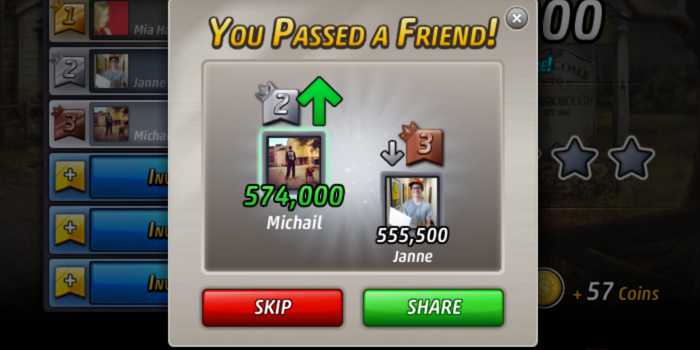
Conclusion: Chained by its elements of success
Criminal Case is without a doubt the best hidden object game I’ve ever played. Storyline, graphics and overall smoothness of gameplay are beautifully combined with the well though retention and virality mechanics, which have propelled the title into an amazing growth. Yet the big question is how Criminal Case will do on mobile.
- The beautiful and detailed crime scene, which looks awesome in full screen mode on a laptop, is simply too small when viewed on iPhone’s 4 inch screen.
- While on Facebook players are content with two to three sessions played around office hours, an active player on mobile likes to get 8 and more sessions spread around the day.
- Completing levels is all about speed in Criminal Case. Yet on mobile, where sessions are often interrupted, the turn based model has emerged as the dominant one. For example King seldom uses timers preferring to count turn instead.
- Lack of turns and inability for player to fail a level takes away the most dominant monetization mechanic, which is pay-to-continue.